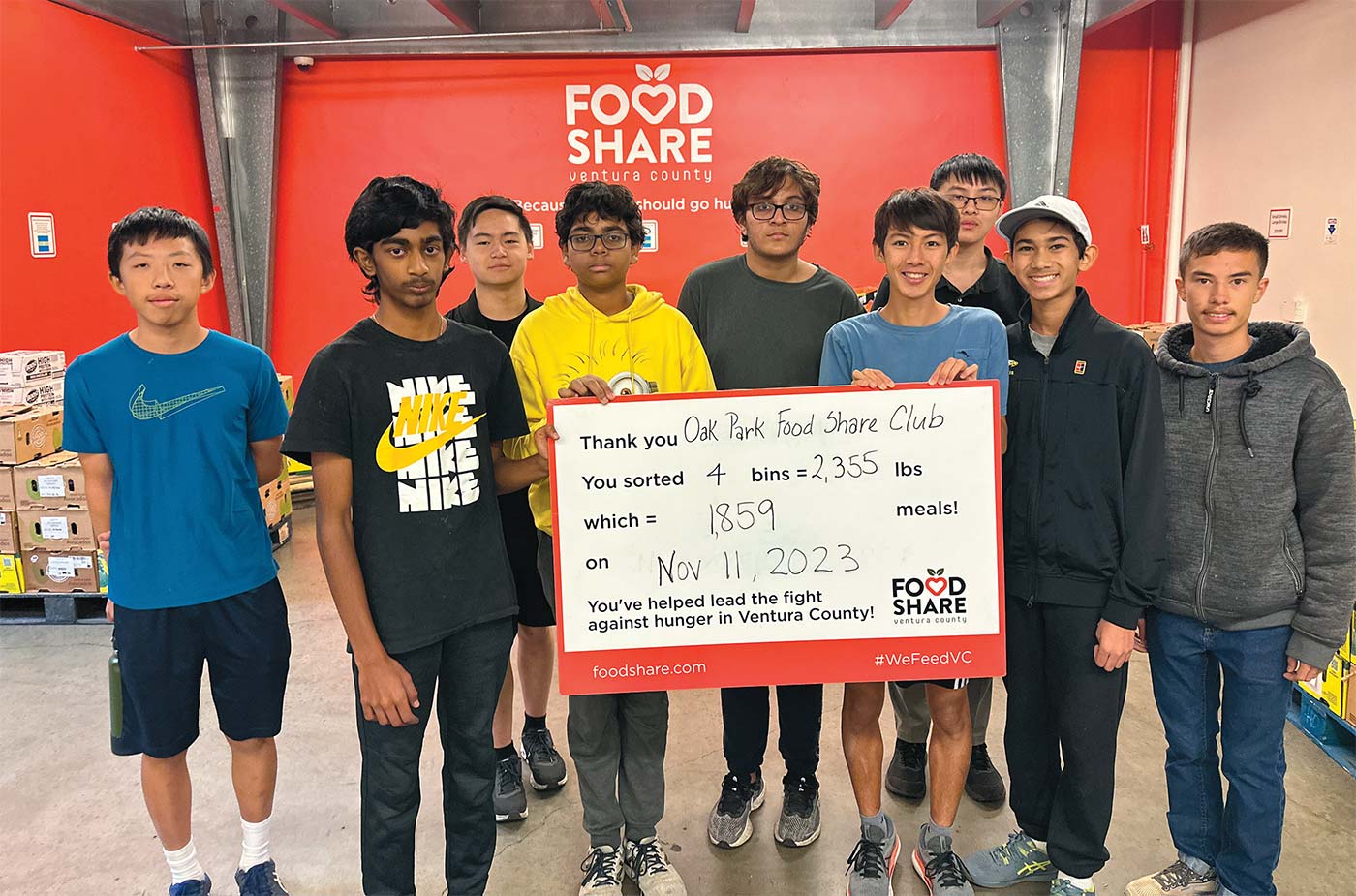Kids Can Help Fight Food Insecurity
Do you know that one in four people in Ventura County suffers from food insecurity—defined as not having access to sufficient food, or food of adequate quality, to meet one’s basic needs?
How does this crisis really affect kids? Research shows that children who experience chronic hunger are significantly more likely to experience behavioral, academic and mental health problems. These issues then increase the chance that kids will drop out of school and earn less money as adults. I wanted to understand what’s being done locally to help kids from food insecure families, and how teens like me—or anyone—can take action to fight hunger in our community.
I spoke with Jennifer Caldwell, chief development officer of Food Share Ventura County, who shared her inspiring insights with me.
What are schools doing to assist food insecure students?
In California, we’re very fortunate that there’s a law called the Universal Meals Program, often referred to as School Meals for All. It’s the first food assistance program in the country to provide breakfast and lunch for every single student in [public] school. The previous law was just for low-income students who had to fill out a form to qualify, but that got overturned and now anybody who needs food can get two meals completely free. The program really helps parents who are already struggling to put food on the table.
What is your organization doing to assist school-age kids?
Children are welcome to visit any of our pantries throughout Ventura County, whether or not they receive school assistance. We have partnered with the Boys and Girls Club on an after-school Kids Farmers’ Market. For this program, we have a nutritionist who creates healthy recipes, does a cool little exercise activity with the kids and she then cooks the food in front of them. She teaches them the health benefits of that food, and then we actually send a food box home with each one of those kids, along with our recipe, for them to then go home and duplicate that recipe with their family. It’s just an alternative way to continue healthy eating habits while also providing fresh, healthy produce to families. It’s a grant-funded program, so we’d love to be able to expand it and do it more, but we really are only able to do it when the funding opportunities become available on our side.
Can you share any examples of local teenagers helping to address food insecurity?
Yes! In September 2023, we had a group from Oak Park High School come to Food Share and volunteer.
It started from this one kid who came to Food Share on his own for volunteer hours. He was so affected by the program, loved being able to volunteer his time and felt like he was making a difference, so he went back to school and he actually started a Food Share club at his school. They do food drives every once in a while.
A couple months ago, they volunteered at Food Share for three hours. Also, they are just spreading the word about food insecurity and how it could affect anybody, at any time. They are sharing the resources of different pantries and food assistance available throughout the county, and trying to take the stigma of shame away from it.
A very high percentage of the people that we serve are working families; they have jobs, they have two jobs, they have three jobs! And it’s still hard in this beautiful Ventura County to make ends meet, so at the very end of the month they need food assistance. We need to break down the stigma of “you have to be homeless or unemployed to need food assistance”—this is critical. What these teenagers did was a really, really unique way for a group of teenagers to be able to give back their time and spread the word.
What’s the most effective way for teenagers like me—or anyone—to take action?
The first step is to organize a group from your school and come in for a tour so you can learn more about us. You can see the different volunteer opportunities that we have available and then take what you learn from the tour back to your school to focus on activities, like food drives, that will help.
Perhaps the biggest way I’ve seen teenagers help is through social media. It is a digital world out there! It is a necessary evil sometimes; it can be used for so much good. Even just posting a picture of yourself volunteering and sharing a little bit about Food Share can help. The ripple effect that social media has for good is so abundant and needs to be used more; it just has so much potential. And it is free! Social media, especially in the teenage hand, has the potential to effect change in a really positive way, if it is used the right way.
- For related news and stories about the California program, visit www.SchoolMealsForAll.org and for more on Food Share and to volunteer, visit www.FoodShare.com.




